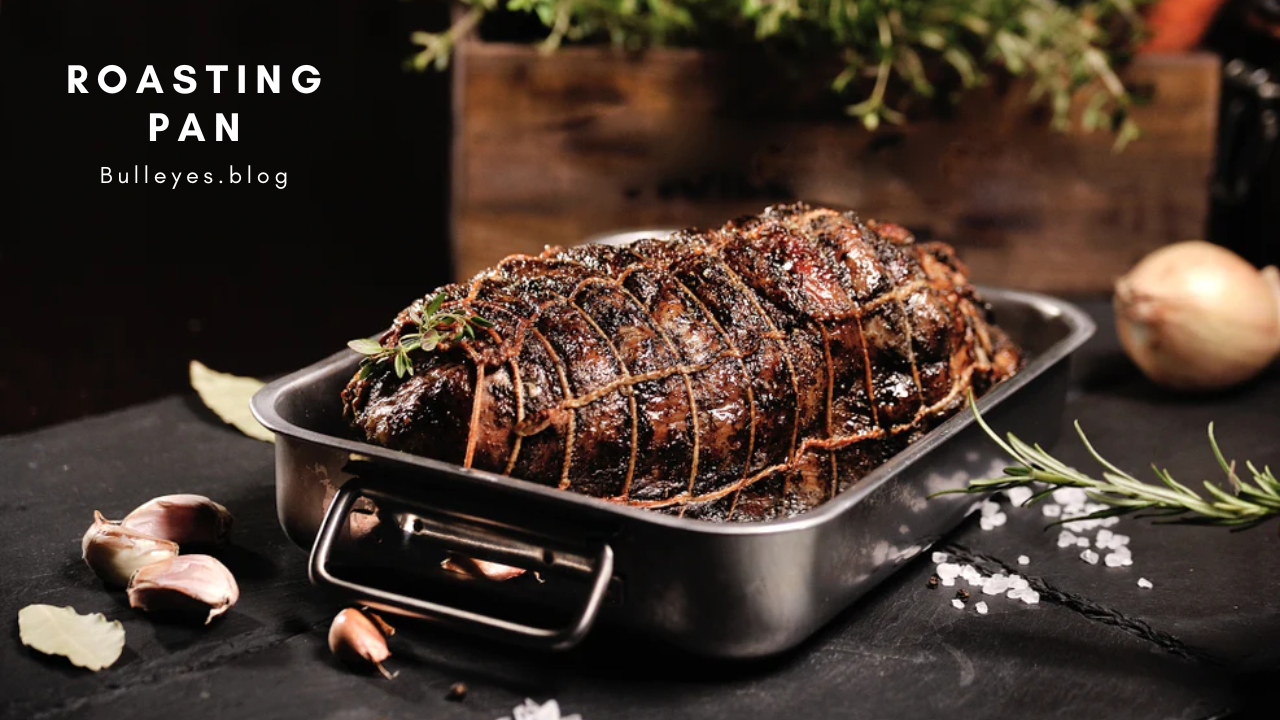
Introduction
A roasting pan is an indispensable kitchen tool for anyone who loves to cook hearty meals. It is a large, rectangular dish with low sides, explicitly designed for roasting meats, poultry, and vegetables. The low sides allow the heat to circulate evenly, ensuring the food cooks thoroughly and develops a crisp exterior.
Typically, a roasting pan is made from stainless steel, aluminum, or cast iron. These materials are chosen for their ability to withstand high temperatures and distribute heat evenly. Some roasting pans come with a rack, which elevates the food above the base of the pan, allowing the drippings to collect below for making gravy or sauce. This setup also helps brown the food evenly, providing a perfect roast every time.
Types of Roasting Pans
When choosing a roasting pan, it’s essential to consider the type that best suits your cooking needs. The classic stainless steel roasting pan is a favorite among many home cooks for its durability and easy maintenance. It’s non-reactive, so it’s safe to use with acidic ingredients, and its dishwasher-safe, making cleanup a breeze.
On the other hand, a nonstick roasting pan can be an excellent choice for those who prefer easy food release and minimal scrubbing. However, using it’s utensils that won’t scratch the nonstick coating is essential. For those who enjoy a bit of rustic charm, a cast iron roasting pan offers excellent heat retention and can go from stovetop to oven. Though it requires more care, the benefits of using a cast iron pan are numerous, including heating and a naturally nonstick surface when correctly seasoned.
How to Use It Effectively
Using a roasting pan effectively requires a few simple tips and tricks. First, always preheat your oven and this pan to the desired temperature. This step ensures that the food starts cooking as soon as it’s placed in the oven, promoting even cooking and browning. For best results, place the food on a rack inside the pan. This elevates the food, allowing air to circulate underneath and helping to achieve that perfect crispiness.
Another key to using it effectively is to avoid overcrowding. When the pan is too full, the food may steam rather than roast, resulting in a soggy texture. Leave enough space around each piece of food for air to circulate. Additionally, baste the food occasionally to keep it moist and flavorful. This can be done using a basting brush or a spoon to drizzle the pan juices over the food.
Choosing the Right Size
Choosing the right size of roasting pan is crucial for successful cooking. The pan size should match the amount of food you plan to cook. A pan that’s too large can cause the drippings to burn, while a pan that’s too small can lead to overcrowding. A pan that holds the food comfortably, with a bit of extra space around the edges, is ideal.
A medium-sized roasting pan, about 14 inches long, is often sufficient for small families or couples. For larger families or holiday gatherings, a larger pan, around 16 to 18 inches, is more appropriate. When choosing a roasting pan, it’s also worth considering the size of your oven. Ensure the pan fits comfortably inside without touching the oven walls, allowing for proper air circulation.
Versatility of a Roasting Pan
A roasting pan is not just for roasting meats; it can be a versatile tool in your kitchen. You can use it for baking casseroles, lasagnas, and even cakes. The large surface area and shallow sides make it ideal for dishes that require even cooking and browning. You can also use it to broil food, as most pans can withstand the high heat needed for this cooking method.
Moreover, it can double as a grill for stovetop cooking. Place the pan across two burners, and you can grill vegetables, cook pancakes, or sear meats. This versatility makes it a valuable investment, as it can serve multiple purposes and save you from needing several specialized cookware pieces.
Choosing Between a Roasting Pan with a Rack and Without
Whether to use a roasting pan with a rack or not depends on your cooking preferences. A rack elevates the food, allowing air to circulate and promoting even cooking. It also helps fat and juices drip away from the food, resulting in a crispier texture. A rack is handy when roasting poultry, as it keeps the bird above the drippings, preventing soggy skin.
However, there are times when a rack may not be necessary. When roasting vegetables or minor cuts of meat, placing them directly in the pan allows them to cook in their juices, enhancing their flavor. If you prefer this method, choose it without a rack or remove the rack when not needed.
The Importance of Depth
The depth of a roasting pan plays a crucial role in its performance. A pan with too shallow sides may not contain all the juices and drippings, leading to spills and potential oven messes. On the other hand, a pan with overly high sides can prevent proper browning by blocking heat circulation. The ideal depth for it is between 2 and 3 inches, which allows for sufficient air circulation and easy access for basting.
Additionally, the depth of the pan can influence the cooking time. Deeper pans may require longer cooking times, as the food is less exposed to direct heat. This can be advantageous for slow-cooking significant cuts of meat but may be better for recipes that require a quick, high-heat roast.
Conclusion
A roasting pan is a versatile and essential kitchen tool that can help you easily prepare delicious meals. Whether you prefer stainless steel, nonstick, or cast iron, there’s a roasting pan that suits your needs. By choosing the right type and size, using it effectively, and caring for it properly, you can enjoy perfectly roasted dishes every time. Remember, the key to a great roast is the quality of the ingredients and the quality of the tools you use. A good roasting pan can make all the difference in your cooking experience.
